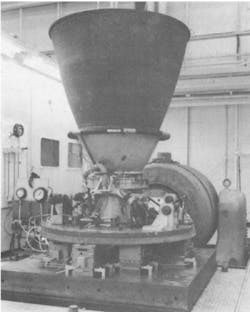The evolution of automotive vibration fixturing (.PDF Download)
The principal vibration testing capabilities which are in common use today largely evolved from the early requirements of the aerospace industry. Standard test protocols, random vibration, single axis testing, and combined temperature and vibration testing were developed in response to the reliability testing needs of the early Gemini and Apollo space programs. The use of electronics in mobile applications was still in its infancy and the need to deploy highly reliable systems in space applications drove the testing industry to develop better tools with which to simulate the new end use environment.
While vibration testing using shakers has been around since World War II, these early shakers were limited to 85 Hz and were more suited to examining the fatigue properties of structural components. Engineers knew that significant vibration energy could be present at higher frequencies and that electronics were more susceptible to these frequencies, but they couldn’t test them until electrodynamic shakers became more common. To ensure that their device under test (DUT) experienced the energy present at these higher frequencies, aerospace testing methods stressed the necessity of vibration fixturing, which delivered high transmissibility throughout the test frequency range.
